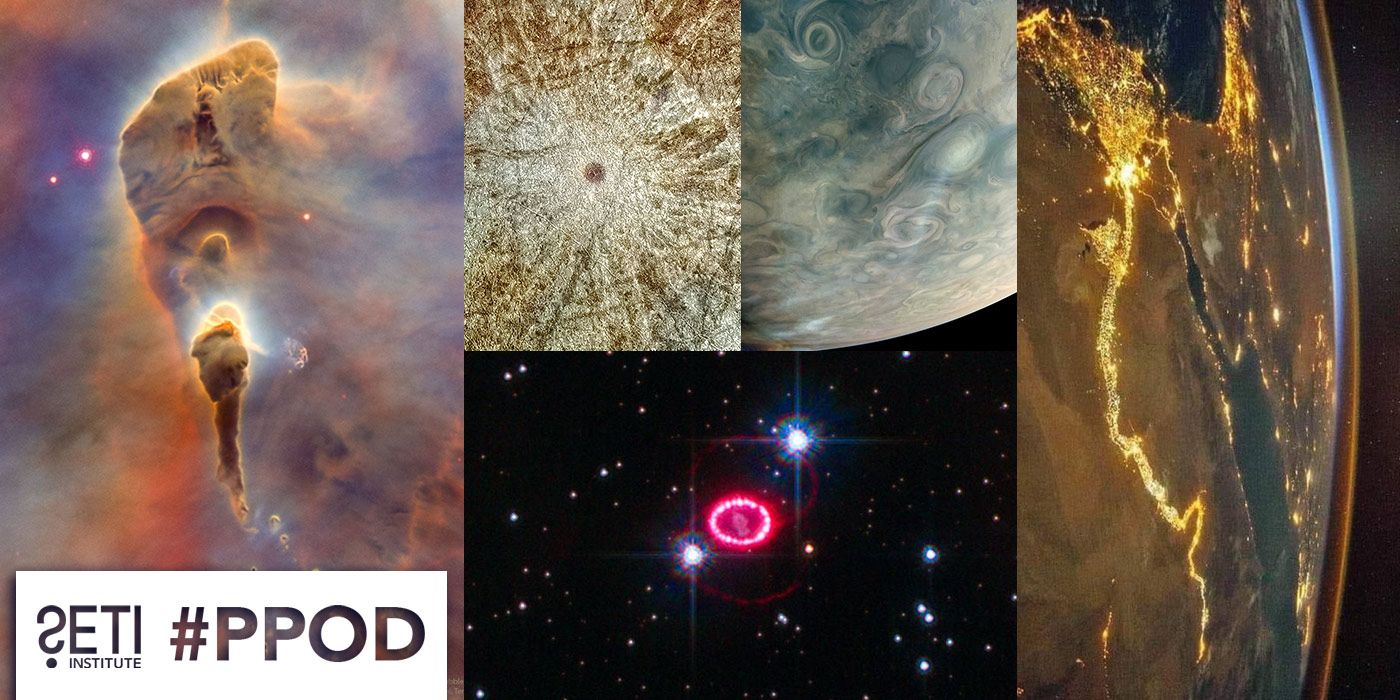
Planetary Picture of the Day
Week of December 11, 2023
Dust, haze, glowing horizons, and a dying star.
Monday, December 11, 2023
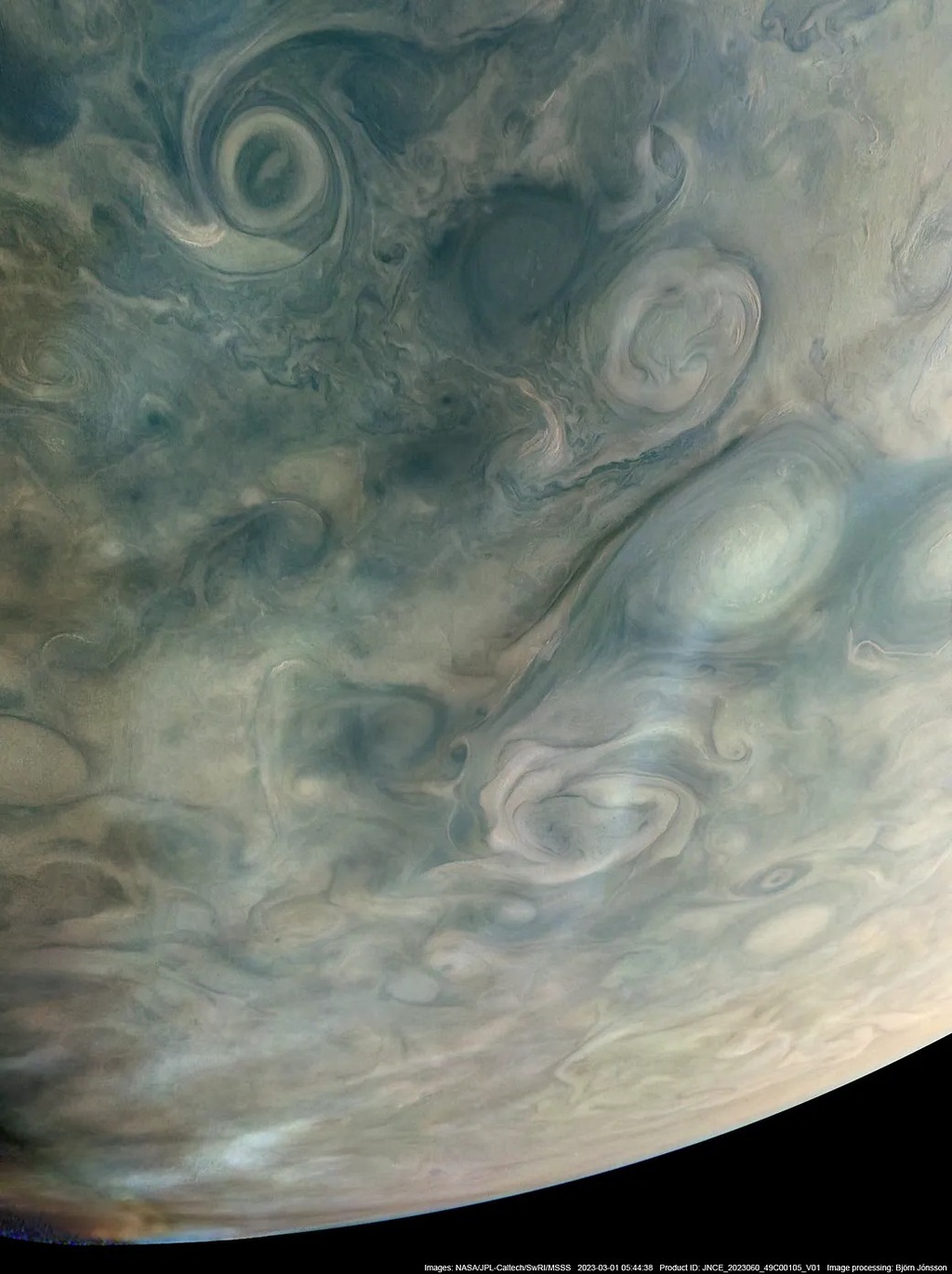
High-Altitude Haze
On March 1, 2023, NASA’s Juno mission completed its 49th close flyby of Jupiter. As the spacecraft flew low over the giant planet’s cloud tops, its JunoCam instrument captured this look at bands of high-altitude haze forming above cyclones in an area known as Jet N7.
Citizen scientist Björn Jónsson processed a raw image from the JunoCam instrument, enhancing the contrast and sharpness. At the time the image was taken, Juno was about 8,200 kilometers above Jupiter’s cloud tops, at a latitude of about 66 degrees.
Tuesday, December 12, 2023
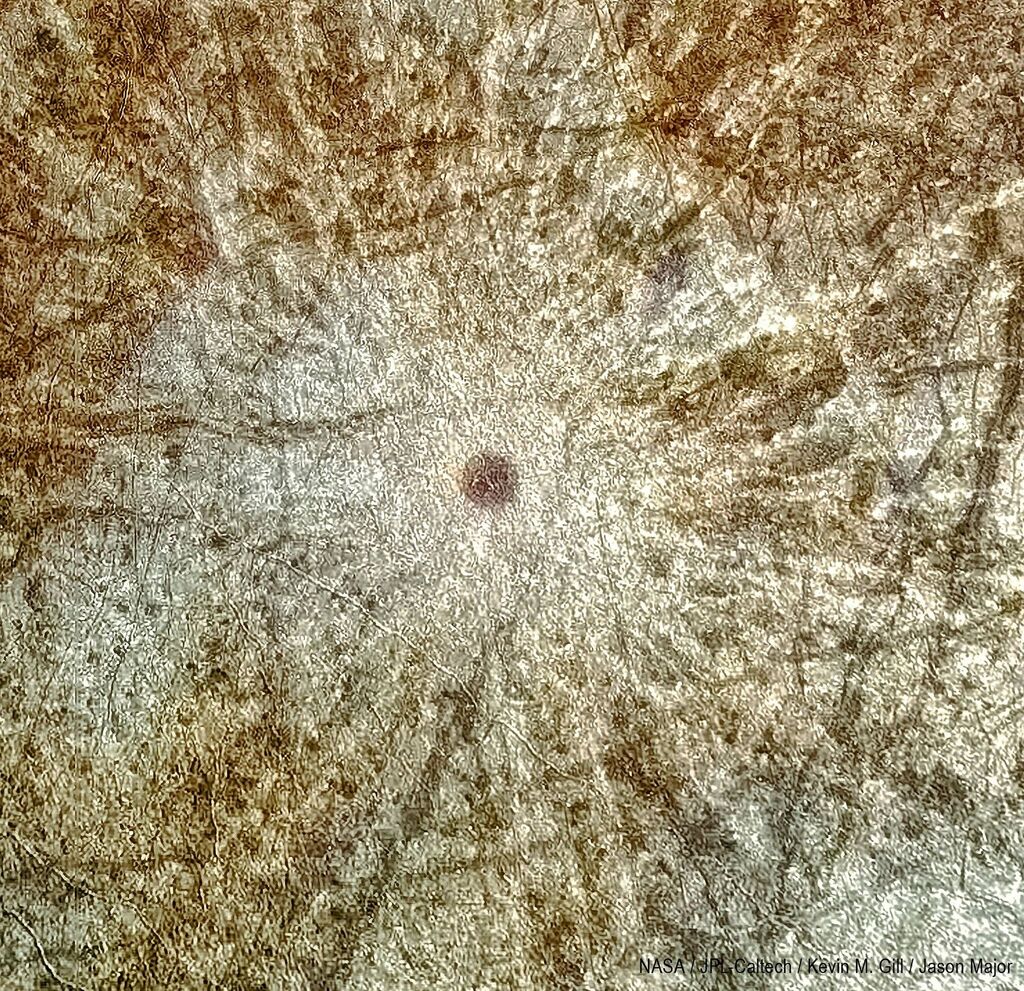
Europa's Pwyll Crater
Pwyll crater is one of the few visible craters on Jupiter's moon Europa. This view was captured by NASA's Galileo spacecraft on Dec. 9, 1996, and processed by K. McGill and Jason Major. The central crater is about 25 km across.
Wednesday, December 13, 2023
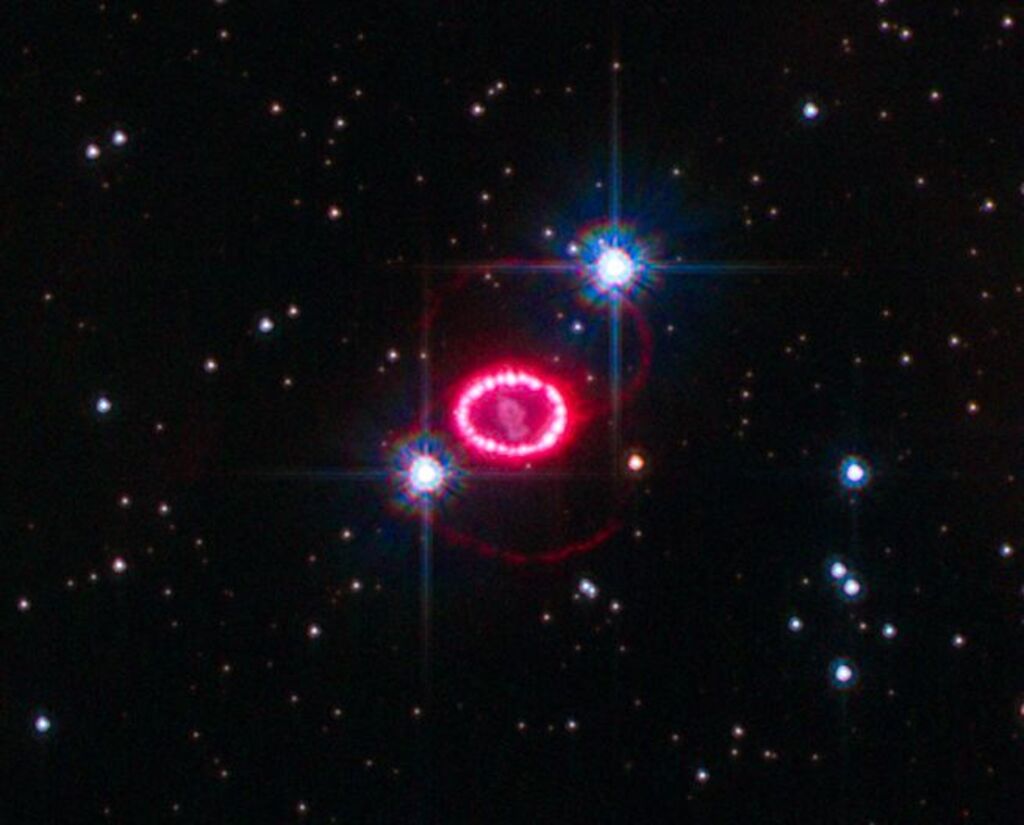
A Dying Star’s Grand Exit
What you are looking at is the remnant of supernova 1987A that occurred about 168,000 light-years away from Earth. The light from this supernova first reached us on February 23, 1987, with its brightness peaking in May of the same year. The supernova remnant resides in our galactic neighbor and dwarf satellite galaxy, the Large Magellanic Cloud.
The stunning image showcases a bunch of pearl-like bright spots forming a ring at the center. The glow is created by a shockwave, made up of ejected material from the star’s explosion, crashing into the material on the inside of the ring, and heating it up. The team studied the interaction between the stellar blast material and the glowing 1-light-year-across gas ring in optical, ultraviolet, and near-infrared light. They found that the gas ring was shed by the star likely around 20,000 years before its explosion. In the future, the hot bright spots constituting the gas ring will enlarge and merge together to form a continuous, unbroken glowing circle. The team also studied how supernova explosions can alter the dynamics and chemistry of their surroundings.
The image was captured by the Hubble Space Telescope’s Advanced Camera for Surveys (using the High-Resolution Channel). F435W, F555W, F625W, and F658N are the different filters that were used to capture this image. The time taken to collect light from the SN 1987A remnant is 4.2 hours.
Thursday, December 14, 2023
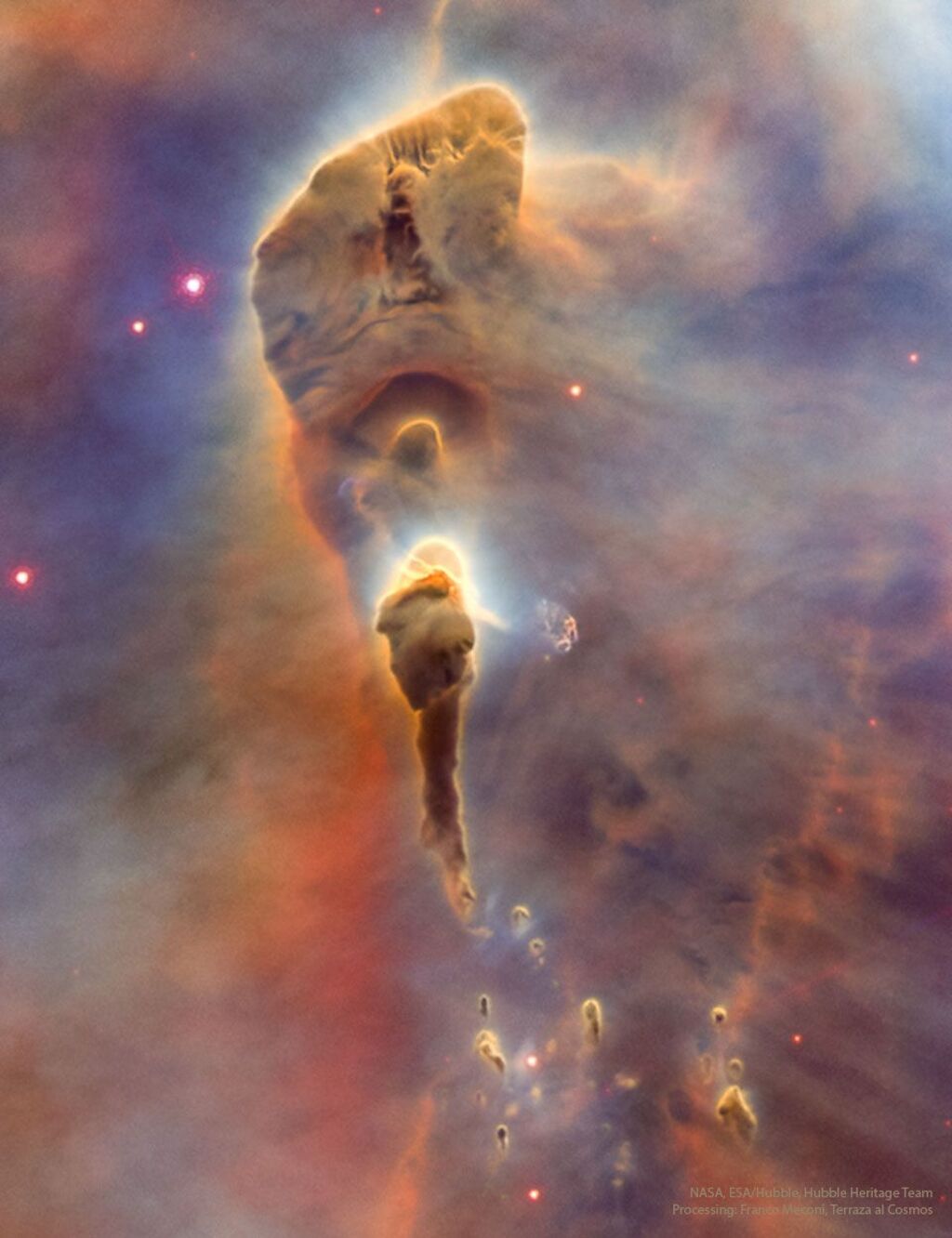
Stars Versus Dust in the Carina Nebula
It's stars versus dust in the Carina Nebula and the stars are winning. More precisely, the energetic light and winds from massive newly formed stars are evaporating and dispersing the dusty stellar nurseries in which they formed.
Located in the Carina Nebula and inside a region known informally as Mystic Mountain, these pillar's appearance is dominated by opaque brown dust even though it is composed mostly of clear hydrogen gas. Even though some of the dust pillars look like torches, their ends are not on fire -- rather they are illuminated by nearby stars.
About 7,500 light-years distant, the featured image was taken with the Hubble Space Telescope and highlights an interior region of Carina known as HH1066 which spans nearly a light-year. Within a few million years, the stars will likely win out completely and the dust torches will completely evaporate.
Friday, December 15, 2023
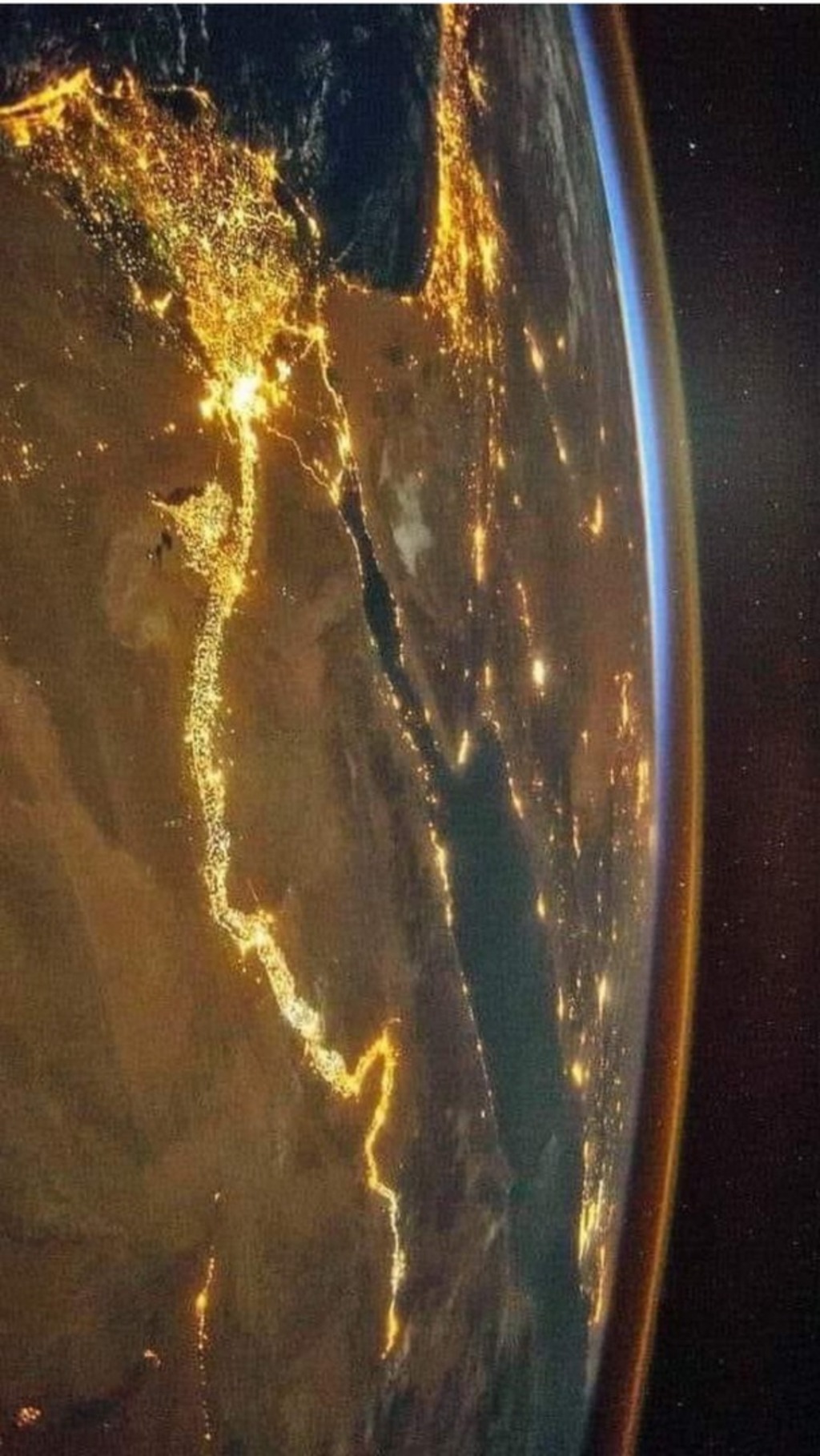
Earth Wallpaper Not-Wednesday
Distracted with AGU23 this week and almost forgot a wallpaper post! This golden ribbon is a symbol of one of Earth's earliest civilizations. Enjoy the Nile River as seen from the ISS. Evidence of technosignatures!





